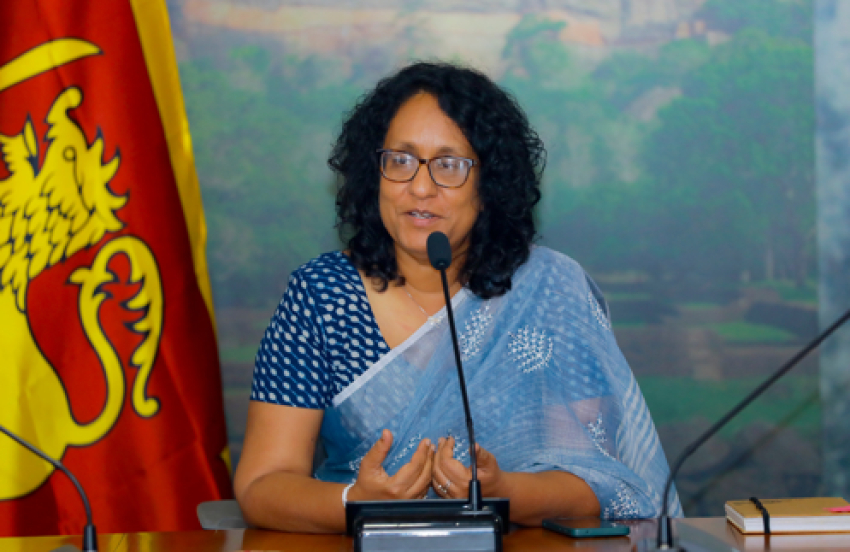Scaling-up public resources for adaptation, loss and damage as well as tackling the imbalance between financial support provided for mitigation and adaptation is yet another important task for COP24. A good opportunity for looking into the possibilities for new and additional finance for loss and damage would be the technical paper on sources of financial support for loss and damage. The paper is planned to be published in 2019 and received input from the Suva Expert Dialogue that was held at the last session of Subsidiary Bodies (SB48) in May 2018 in Bonn
The Germanwatch Global Climate Risk Index is an analysis based on one of the most reliable data sets available on the impacts of extreme weather events and associated socio-economic data. The Germanwatch Climate Risk Index 2019 is the 14th edition of the annual analysis. Its aim is to contextualize ongoing climate policy debates – especially the international climate negotiations – with real-world impacts during the last year and the last 20 years.
People all over the world have to face the reality of climate change – in many parts of the world manifesting as increased volatility of extreme weather events. Between 1998 and 2017, more than 526,000 people died worldwide and losses of US$ 3.47 trillion (in PPP) were incurred as a direct result of more than 11,500 extreme weather events.
What’s on the agenda for resilience at COP24 in Katowice?
Key messages
* Puerto Rico, Sri Lanka and Dominica were at the top of the list of the most affected countries in 2017.
* Between 1998 and 2017, Puerto Rico, Honduras and Myanmar were the countries most affected by extreme weather events.
* Altogether, more than 526,000 people died as a direct result of more than 11,500 extreme weather events; and losses between 1998 and 2017 amounted to around US$ 3.47 trillion (in Purchasing Power Parities).
* Storms and their direct implications – precipitation, floods and landslides – were one major cause of damage in 2017. Of the ten most affected countries in 2017, four were hit by tropical cyclones. Recent science has found a clear link between climate change and record-breaking precipitation of 2017’s hurricanes. It also suggests that the number of severe tropical cyclones will increase with every tenth of a degree in global average temperature rise.
* In many cases, single exceptional disasters have such a strong impact that the countries and territories concerned are also ranked high in the long-term index. Over the last few years another category of countries has been gaining relevance: Countries like Haiti, the Philippines and Pakistan that are recurrently affected by catastrophes continuously rank among the most affected countries both in the long-term index and in the index for the respective year.
* Of the ten most affected countries and territories (1998–2017), eight were developing countries in the low income or lower-middle income country group, one was classified as an upper-middle income country (Dominica) and one an advanced economy generating high income (Puerto Rico).
* The Climate Summit in Katowice should adopt the ‘rulebook’ needed for the implementation of the Paris Agreement, including the global adaptation goal and adaptation communication guidelines. Furthermore, COP24 must increase efforts to properly address loss and damage, which appears as a cross-cutting issue referenced throughout various negotiation streams, with significant risk of being omitted from final negotiation text. The risks of future climate-related losses and damages are far too severe to simply function as a negotiation chip.
In Katowice, the three-year period to develop the rulebook for the Paris Agreement comes to an end. As stipulated in the Paris Agreement, states should regularly communicate their priorities, support needs, plans and activities in the field of adaptation (Article 7, para 10,11). These reports (“adaptation communications”) shall also inform the global stocktake of countries’ climate outputs. Based on the previous negotiations, it will be up to the reporting countries to decide in which document the information will be provided. They may be, for example, part of the National Adaptation Plans (NAPs) or the National Climate Plans (NDCs). Parties still debate whether the guidelines should be identical in both cases, or whether guidelines should be “vehicle-specific”, i.e. separate guidelines for NAPs and NDCs. Regardless of the document the information is produced for, it should be publicly accessible in an adaptation register (Article 7 12). The issue here is whether climate protection measures and climate adaptation measures should be made accessible separately or jointly. Apart from that, in Katowice it will be important that the issue of loss and damage finds its way into the rulebook, especially under the global stocktake.
On the basis of a COP21 decision, the Least Developed Country Expert Group, in collaboration with the Adaptation Committee, prepared a report on progress in the process of developing and implementing NAPs. The recommendations of the report will be submitted to COP24.
Scaling-up public resources for adaptation, loss and damage as well as tackling the imbalance between financial support provided for mitigation and adaptation is yet another important task for COP24. A good opportunity for looking into the possibilities for new and additional finance for loss and damage would be the technical paper on sources of financial support for loss and damage. The paper is planned to be published in 2019 and received input from the Suva Expert Dialogue that was held at the last session of Subsidiary Bodies (SB48) in May 2018 in Bonn. The current terms of reference and outline for the report, unfortunately though, foresee only looking into existing sources of finance.
Furthermore, the decision for the Adaptation Fund to serve the Paris Agreement needs to be finalised in Katowice. As a multilateral climate fund focussing especially on concrete small-scale adaptation projects to address the needs of the most vulnerable people and communities in developing countries, the Fund covers an important niche in the adaptation finance landscape.
Adopting these central decisions at COP24 would be a great opportunity to address and respond in a timely way to the devastating impacts of climate change, such as those caused by tropical cyclones. It will therefore be crucial that loss and damage be significantly represented in the rulebook. The risks of future climate-related loss and damage are far too severe to simply use them as a negotiation chip. Forward looking adaptation communications and the continuous exchange of knowledge on adaptation to climate change that is in line with the Sustainable Development Goals is another aspect of utmost importance.




















